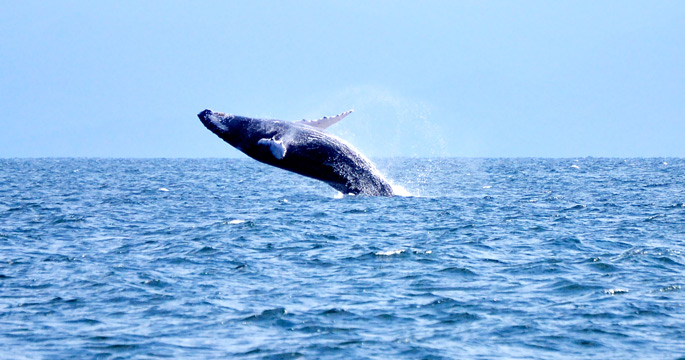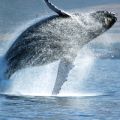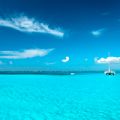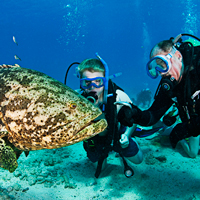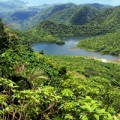On these islands, you don't have to go far from shore to find big adventures
Thanks to warm weather, clear waters and an abundance of large marine mammals, the Caribbean is gaining an international reputation as one of the world’s best whale watching destinations. In all, more than 25 species of whales and dolphin are found in these waters. They may be found around many of the Windward and Leeward Islands, but there are certain destinations that provide almost guaranteed sightings. Here are three of our favorites.
Dominican Republic
The DR is the most popular whale watching destination in the Caribbean, thanks to the seasonal arrival of humpback whales, which migrate from northern waters each winter to breed and give birth in protected waters along the island’s northern coast. A limited number of long-range boats visit offshore sites on the Silver and Navidad Banks, but the vast majority of whale watching activity takes place in the sheltered waters of Samaná Bay. A half-day excursion puts watchers in the thick of the action, and these whales do much more than just come up for air. Humpbacks are known for behaviors such as pectoral slapping, lob tailing and breaching. In simple terms, this means they can be seen rolling onto their sides to slap the water with a large fin, turning upside down and sticking their large tail flukes high in the air, and leaping from the water to create dramatic splashes. Humpbacks also sing, and a number of tour operators equip their boats with underwater hydrophones that allow passengers to hear the underwater sounds of the whales. The Dominican Republic’s whale watching season runs from January to March.
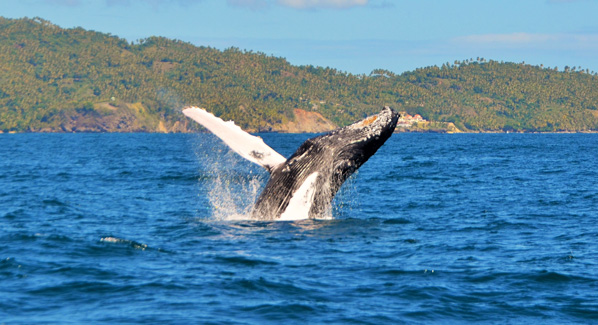
Humpbacks come to the Dominican Republic each winter to rest and breed in the protected waters of Samaná Bay. The bay, which is now a humpback sanctuary, draws several thousand whales. Photo: Dominican Republic Tourism
Dominica
The steep mountains of Dominica continue downward into the Caribbean Sea, reaching depths of more than 3,000 feet quite close to the island’s coast. This creates an ideal habitat for one of the largest mammals in the world—the sperm whale. Sheltered from wind and waves by the tall peaks, they find calm waters where they can rest between deep dives for giant octopus, which are their favorite food. More than 200 sperm whales live year round in an area off the island’s western shore. Many of Dominica’s full-time whales are females who use the protected waters to give birth and raise their young. From February through May, they are joined by males, who take a break from their open ocean rovings to stop by for courtship and breeding. Whale watching tours are conducted year round, but the period from October through March is considered prime season, as this is the best time to find not only the sperm whales, but also migrating species such as humpbacks and large pods of bottlenose, spinner and spotted dolphins. The towns of Scotts Head, Roseau, Layou and Point Round are all popular starting points for boat trips.
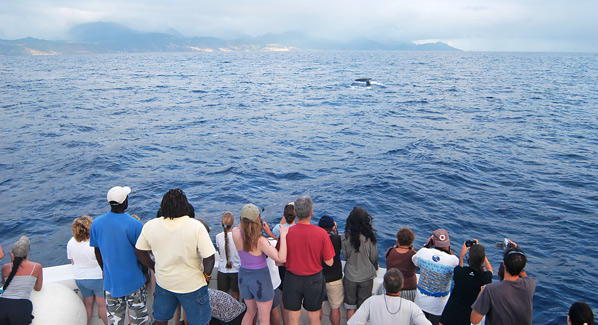
Passengers on a whale watching boat in the waters of Dominica watch as a sperm whale dives into the depths. This species can be found year round close to the island’s west coast. Photo: Dominica Tourist Board
Guadeloupe
For sheer variety, few whale watching destinations can match the islands of Guadeloupe. At any time of the year, one of more than two dozen species of marine mammals may be spotted from land or from the decks of the ferryboats that connect the islands. But for all almost guaranteed encounters with whales and dolphin, visitors head to the northwestern corner of Basse Terre. Just a few miles from shore, an area of deep water is home to sperm whales, and sits right in the pathway of migrating humpbacks. In addition to these two high-profile species, the waters hold a veritable who’s who of Caribbean whales, including long and short finned pilot whales, orca, pygmy right whales, false killer whales, pygmy sperm whales, melon-headed whales and the rare Antilles beaked whale. Also frequenting these waters are spinner, spotted, bottlenose, Risso’s and Fraser’s dolphins. Tour boats often use underwater microphones to locate sperm whales by the clicking sounds they make. At any time of the year, operators claim a better than 60 percent chance of finding the sperms, and encounters with one or more of the area’s other types of whale or dolphin are all but guaranteed. A favorite are the large pods of spinner dolphins, which can number in the hundreds, and provide an aerial show as they leap and twist.
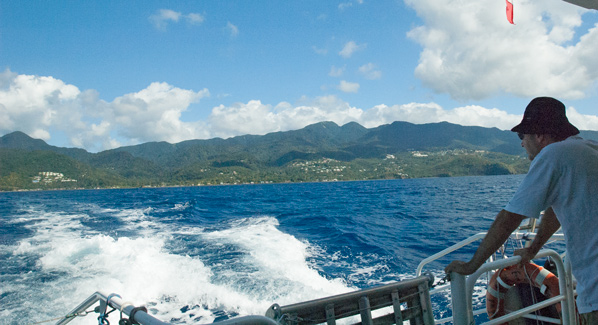
In Guadeloupe, the island of Basse-Terre is the starting point for whale watching tours to an area known to hold more than 15 different species of marine mammal. Photo: Debbie Snow

